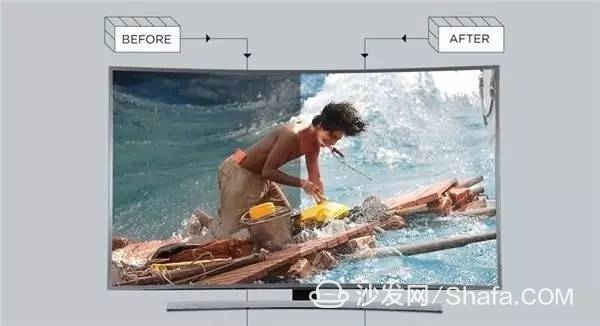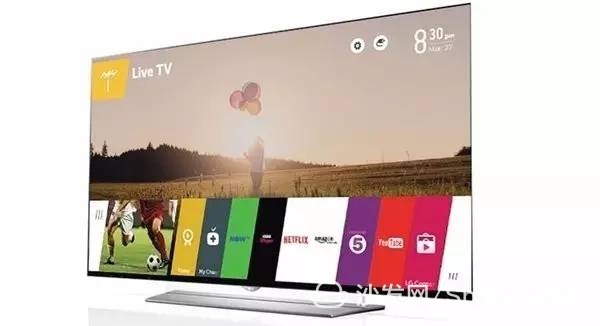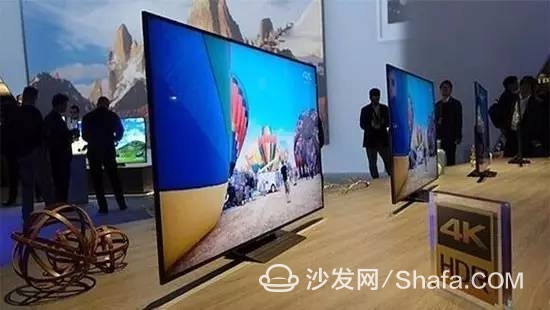What is HDR?
The so-called HDR, namely High Dynamic Range. It can be said that it is the next big thing in the field of television products. Whether this term was first mentioned or in the photography field is a technique that can enhance the dynamic range of a photograph—that is, the contrast between the brightest white and the darkest black.

The core of HDR is that the higher the dynamic range, the closer the photos are to reality. The application of HDR on TV is also a reason.
Look through the window to see the sky. The cloud is white (well, it may be gray), but there will definitely be a clear hierarchy. In the whole cloud, you should be able to distinguish different brightness.
Now look at the clouds on TV. Does it feel more "flat" compared to reality? You may see a whole piece of the same white, the level is difficult to distinguish. There are several reasons for this.
What is HDR good for?

The first reason is of course the limited dynamic range of your TV. It is difficult to completely present all the different brightness levels. This means that you will lose a lot of details that should have been there. After all, the information your eyes can handle far exceeds what your TV can provide.
Another factor is the process of image processing. In order to meet the technical ceiling of television, the amount of image information will be greatly reduced.
At least in brightness, TV performance has become very powerful. An ordinary TV has a brightness of about 100 nits to 300 nits, and an HDR TV can theoretically reach a maximum of 5000 nits. Of course, HDR TV does not run bright eyes, it is only to widen the scope in order to better show light and shadow.
The core idea of ​​HDR is to let the audience see more things, whether it is the shadow or the details of the highlights, you can see. The sun will not be as dazzling, the colors will be fuller and truer, and the gradient of the hue will be more delicate. In general, HDR TV will present more natural and realistic images.
HDR will be a girl?

Of course, all people want a more realistic picture and more vivid details. In the past few years, countless television manufacturers have promised to bring them, but most of them are gimmicks. HDR will be like this? At least it already has official standards.
The UHD Alliance has developed a series of standards for HDR television so that its implementation can be standardized. These standards are very detailed, including minimum lumen levels, color depth, bandwidth requirements, encoding and decoding requirements, and energy consumption.
There is no need to doubt the authority of the ultra-high resolution alliance. It consists of a series of television manufacturers, movie product manufacturers and distributors. Members include Dolby, LG, Netflix, Panasonic, Samsung, Sharp, Sony, Tectics, and Walter.・Disney Studios and Twentieth Century Fox are all famous names.
HDR and UHD

People always put HDR and UHD together and say that sometimes people are confused or think there is a particularly close relationship between the two. Both HDR and UHD are designed to enhance the user's viewing experience, but they are two different technologies that have little overlap.
UHD is ultra-high resolution, which is understood as 4K resolution. All it has to do is increase the number of pixels dramatically, and HDR is to make pixels more accurate, independent of resolution. Whether you are looking at a 32-inch small TV set in a bedroom or a 75-inch monster in the living room, HDR brings a visible difference.
Of course, HDR and UHD can achieve close cooperation. The HDR televisions that have been announced so far all support 4K UHD.
How can I enjoy HDR?

To enjoy the picture quality that HDR brings, you must first replace a display device. Whether it is a TV or a projector, it has to support HDR technology anyway.
LG, Samsung, Sony, and Panasonic have all released their own HDR TVs, many of which have already been sold.
Next is the video source. If your HDR movie is on a CD, you also need a Blu-ray player that supports HDR. If it is a network stream, then you also need the appropriate streaming device, whether it is the TV itself or the network box.
The future of HDR

There is no doubt that HDR technology is a very attractive idea, although it is still a long way from most of us.
For now, HDR already has official definitions and official standards, and then it will also come to the mainstream crowd through video streaming services. Then, the new 4K Blu-ray movies also listed HDR as a standard technology. For the optimists, the days after are really exciting.
The combination of 4K and HDR means that ultra-high-definition, ultra-high dynamic images are coming. It will be more popular than the current 1080p Full HD standard. When these really come, our viewing experience will be fundamentally different.
Will 2016 be the year of HDR? hope so. In any case, the future is worth the wait.
The so-called HDR, namely High Dynamic Range. It can be said that it is the next big thing in the field of television products. Whether this term was first mentioned or in the photography field is a technique that can enhance the dynamic range of a photograph—that is, the contrast between the brightest white and the darkest black.

The core of HDR is that the higher the dynamic range, the closer the photos are to reality. The application of HDR on TV is also a reason.
Look through the window to see the sky. The cloud is white (well, it may be gray), but there will definitely be a clear hierarchy. In the whole cloud, you should be able to distinguish different brightness.
Now look at the clouds on TV. Does it feel more "flat" compared to reality? You may see a whole piece of the same white, the level is difficult to distinguish. There are several reasons for this.
What is HDR good for?

The first reason is of course the limited dynamic range of your TV. It is difficult to completely present all the different brightness levels. This means that you will lose a lot of details that should have been there. After all, the information your eyes can handle far exceeds what your TV can provide.
Another factor is the process of image processing. In order to meet the technical ceiling of television, the amount of image information will be greatly reduced.
At least in brightness, TV performance has become very powerful. An ordinary TV has a brightness of about 100 nits to 300 nits, and an HDR TV can theoretically reach a maximum of 5000 nits. Of course, HDR TV does not run bright eyes, it is only to widen the scope in order to better show light and shadow.
The core idea of ​​HDR is to let the audience see more things, whether it is the shadow or the details of the highlights, you can see. The sun will not be as dazzling, the colors will be fuller and truer, and the gradient of the hue will be more delicate. In general, HDR TV will present more natural and realistic images.
HDR will be a girl?

Of course, all people want a more realistic picture and more vivid details. In the past few years, countless television manufacturers have promised to bring them, but most of them are gimmicks. HDR will be like this? At least it already has official standards.
The UHD Alliance has developed a series of standards for HDR television so that its implementation can be standardized. These standards are very detailed, including minimum lumen levels, color depth, bandwidth requirements, encoding and decoding requirements, and energy consumption.
There is no need to doubt the authority of the ultra-high resolution alliance. It consists of a series of television manufacturers, movie product manufacturers and distributors. Members include Dolby, LG, Netflix, Panasonic, Samsung, Sharp, Sony, Tectics, and Walter.・Disney Studios and Twentieth Century Fox are all famous names.
HDR and UHD

People always put HDR and UHD together and say that sometimes people are confused or think there is a particularly close relationship between the two. Both HDR and UHD are designed to enhance the user's viewing experience, but they are two different technologies that have little overlap.
UHD is ultra-high resolution, which is understood as 4K resolution. All it has to do is increase the number of pixels dramatically, and HDR is to make pixels more accurate, independent of resolution. Whether you are looking at a 32-inch small TV set in a bedroom or a 75-inch monster in the living room, HDR brings a visible difference.
Of course, HDR and UHD can achieve close cooperation. The HDR televisions that have been announced so far all support 4K UHD.
How can I enjoy HDR?

To enjoy the picture quality that HDR brings, you must first replace a display device. Whether it is a TV or a projector, it has to support HDR technology anyway.
LG, Samsung, Sony, and Panasonic have all released their own HDR TVs, many of which have already been sold.
Next is the video source. If your HDR movie is on a CD, you also need a Blu-ray player that supports HDR. If it is a network stream, then you also need the appropriate streaming device, whether it is the TV itself or the network box.
The future of HDR

There is no doubt that HDR technology is a very attractive idea, although it is still a long way from most of us.
For now, HDR already has official definitions and official standards, and then it will also come to the mainstream crowd through video streaming services. Then, the new 4K Blu-ray movies also listed HDR as a standard technology. For the optimists, the days after are really exciting.
The combination of 4K and HDR means that ultra-high-definition, ultra-high dynamic images are coming. It will be more popular than the current 1080p Full HD standard. When these really come, our viewing experience will be fundamentally different.
Will 2016 be the year of HDR? hope so. In any case, the future is worth the wait.
Gas Generating Set,Stable Performance Gas Generator,Gas Generating Set,Continuous Running Generator
Shaoxing AnFu Energy Equipment Co.Ltd , https://www.sxanfu.com